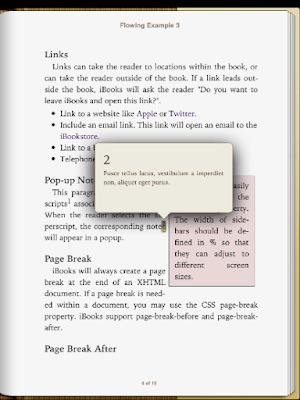MathMl binding in epub v.3 is not a typical element:
If you use this equation as such in your ebook than epub v3 allow you to use the capability of mathml in your source code with some recommendations:

Recommendations:
First you have to write the mathml code for this equation, for this Open Office Math editor is a good choice. Open it and write the code it is as easy as writing the sentence. Save this code as .mml, now it looks like as:
<math xmlns="http://www.w3.org/1998/Math/MathML">
<semantics>
<mrow>
<mrow>
<mi>x</mi>
<mo stretchy="false">=</mo>
<mrow>
<mfrac>
<mn>6</mn>
<mi>y</mi>
</mfrac>
<mo stretchy="false">−</mo>
<mfrac>
<mn>5</mn>
<msup>
<mi>y</mi>
<mn>2</mn>
</msup>
</mfrac>
</mrow>
</mrow>
</mrow>
<annotation encoding="application/xhtml+xml">x = 6 over y - 5 over y^2</annotation>
</semantics>
</math>
Use this code in your file and create the epub.
As Reading System support for MathML rendering is inconsistent, Authors are encouraged to provide a fallback image using the altimg attribute on the math element. It is recommended that the dimension and alignment attributes (altimg-width, altimg-height and altimg-valign) be used in conjunction with the altimg attribute.
Although MathML is a core content type, it is required that you declare which XHTML pages have MathML in the OPF file, as shown below:
Declaring MathML content in the OPF file
<manifest> <item href="mathml-style.css" id="css1" media-type="text/css"/> <item href="mathml.xhtml" properties="mathml" id="page1" media-type="application/xhtml+xml"/> <item href="toc.ncx" id="ncx" media-type="application/x-dtbncx+xml"/> <item id="toc" properties="nav" href="toc.xhtml" media-type="application/xhtml+xml"/></manifest> |
http://www.w3.org/1998/Math/MathML.
<?xml version="1.0"?><html xmlns="http://www.w3.org/1999/xhtml" xmlns:epub="http://www.idpf.org/2007/ops" xmlns:m="http://www.w3.org/1998/Math/MathML"> <head> <title>Example of MathML in EPUB 3</title> <link rel="stylesheet" type="text/css" href="mathml-style.css" /> </head> <body> <m:math display="block"> <m:mrow> <m:mi>x</m:mi> <m:mo>=</m:mo> <m:mfrac> <m:mrow> <m:mo form="prefix">-</m:mo> <m:mi>b</m:mi> <m:mo>±</m:mo> <m:msqrt> <m:msup> <m:mi>b</m:mi> <m:mn>2</m:mn> </m:msup> <m:mo>-</m:mo> <m:mn>4</m:mn> <m:mo></m:mo> <m:mi>a</m:mi> <m:mo></m:mo> <m:mi>c</m:mi> </m:msqrt> </m:mrow> <m:mrow> <m:mn>2</m:mn> <m:mo></m:mo> <m:mi>a</m:mi> </m:mrow> </m:mfrac> </m:mrow> </m:math> </body></html>
Comments
Post a Comment